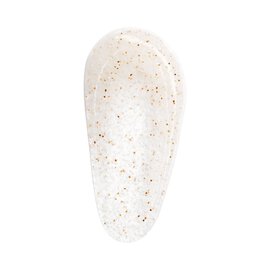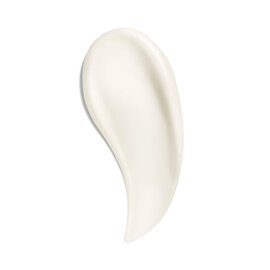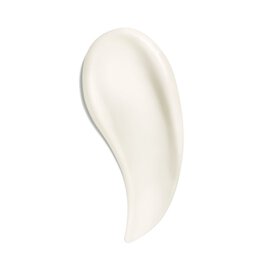Daily Skincare Routine to Prevent and Treat Dry Skin on the Legs
Dry skin on your legs is irritating – it’s itchy, uncomfortable, sometimes painful, and can make you feel insecure to show your legs.
If you dream about having hydrated, glowy skin on your legs, keep reading. In this article, we’ll show you how to build a daily routine that hydrates and soothes dry skin on your legs.
How do you know you have dry skin on your legs?
What are the symptoms of dry skin on your legs? It can look like:
- Scaly, white patches
- A feeling of tightness
- Rough to the touch
- Flaking skin
- Cracks in the skin
- Itchiness
- Redness
You should consult a doctor if your skin doesn’t improve after treatment, or if you’re experiencing pain and other symptoms along with the dry skin.
What causes dry skin on your legs?
Dry skin is caused by a lack of natural oil in the skin. Some people are more susceptible to getting dry legs because of genetic factors. There is also a big environmental and lifestyle influence on skin dryness. Many factors can cause dry skin on your legs, including:
- Cold, dry climates (winter weather)
- Excessive heating – such as fireplaces, space heaters, or hot showers
- Harsh fragrances or cleaning products
- Aging
- Medical causes – including but not limited to skin conditions and medication side effects
- Lifestyle habits – such as drinking or smoking
While there’s little you can do about factors such as aging or genetics, you can make some changes to your lifestyle and environment to improve your symptoms of dry skin on your legs.
First of all, stay hydrated by drinking lots of water and eating nutritious food. Avoid excessive caffeine, alcohol, and nicotine. If you can, avoid cold, dry climates or stay bundled up if you can’t avoid it. Don’t stand too close to fireplaces or space heaters, and take warm (not hot) showers or baths.
Taking these precautions should help reduce the symptoms of dry skin that are caused by environmental factors.
How to treat dry skin on your legs
1. Wash your legs with a hydrating body wash.
Treating dry skin on your legs starts in the shower with a hydrating body wash. Choose a body wash that will gently cleanse without stripping your skin of its natural oils. For the most protection against dry patches, opt for a shower oil instead – a soothing formula that transforms from an oil to a soft foam for a gentle lather.
Biotherm’s Oil Therapy Shower Oil softens, soothes, and cleanses dry skin with a combination of three precious oils – Musk Rose Oil, Passion Flower Oil, and Apricot Oil. Our studies show that after 4 weeks:
- 92% of women say their skin feels soft
- 92% of women say their skin looks smooth
- 89% of women say their skin feels supple
2. Take care when shaving your legs.
Shaving your legs without prepping your skin can cause dryness and irritation. First, make sure you’re using a fresh razor.
A dull razor will drag against your skin and cause dryness and irritation. Make sure your legs are wet before shaving and apply a hydrating shaving foam. Then gently shave your legs, passing over each area only once to reduce irritation.
3. Exfoliate your legs to reveal a smoother surface.
If your dry skin shows up as flakiness on your legs, a body exfoliator will go a long way to improve skin texture, roughness, and strawberry legs. Don’t overdo it – use an exfoliator once or twice a week to renew your skin without damage.
Again, choose a body exfoliator that has added hydration or a non-irritating formula to avoid stripping your skin or disrupting the skin barrier.
This Biotherm Anti-Roughness Peeling Body Scrub is formulated with micro-grains for gentle exfoliation, and added salicylic acid, biotech plankton, peptides, and oils for smoothness and hydration.
4. Apply a rich cream moisturizer to your legs daily.
Apply a rich body lotion or body butter daily to repair the dry skin on your legs. Always apply a moisturizer after showering (while skin is still slightly damp) and always after shaving. Even if you’re not showering or shaving that day, apply a daily moisturizer to your legs to maintain optimal hydration levels.
Look for moisturizers that have ultra-nourishing ingredients, such as shea butter. This Biotherm Lait Corporel Le Beurre is a deeply hydrating body butter infused with both shea butter and Biotech Plankton – a probiotic fraction that revives the skin’s natural functions. A study with 24 women shows that this body butter boosts skin hydration by 25% only 4 hours after application.
5. Protect your legs from sun damage with sunscreen.
Sun damage contributes to dryness and discomfort on your legs. To protect your body from UV rays, apply a body sunscreen with at least SPF 30+ multiple times a day. Always reapply after bathing or swimming.
This Biotherm Sun Milk with SPF 30 is a hydrating body sunscreen that protects your skin from sun damage and provides 24-hour hydration. It has also been formulated to be more respectful of phytoplankton and aquatic life.
For even more protection against harmful UVA/UVB rays, opt for the Sun Milk with SPF 50.
If you can, wear long pants or skirts to cover your legs as often as possible to prevent sun-induced dryness.
If you follow these tips and keep up a solid hydration routine, your legs will be smooth, hydrated, and radiant – without roughness or dry patches.











